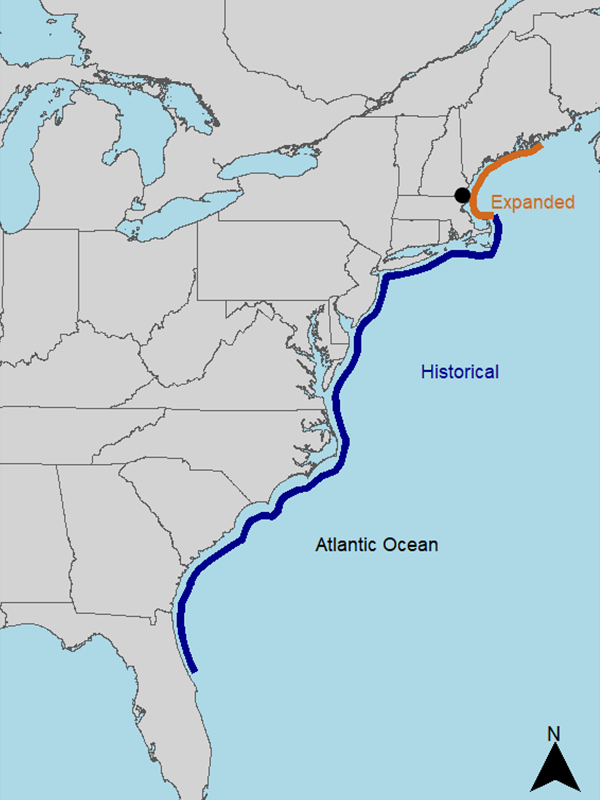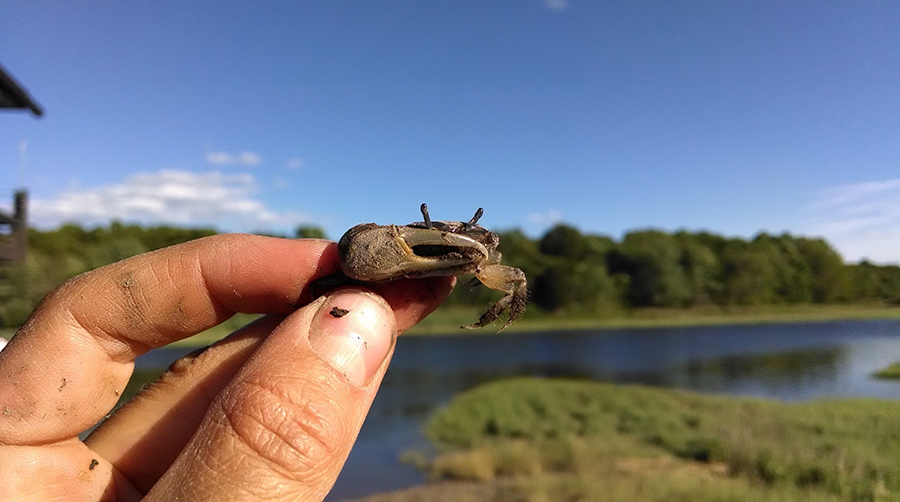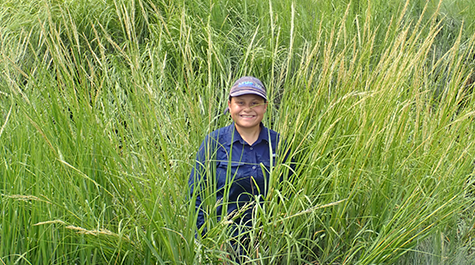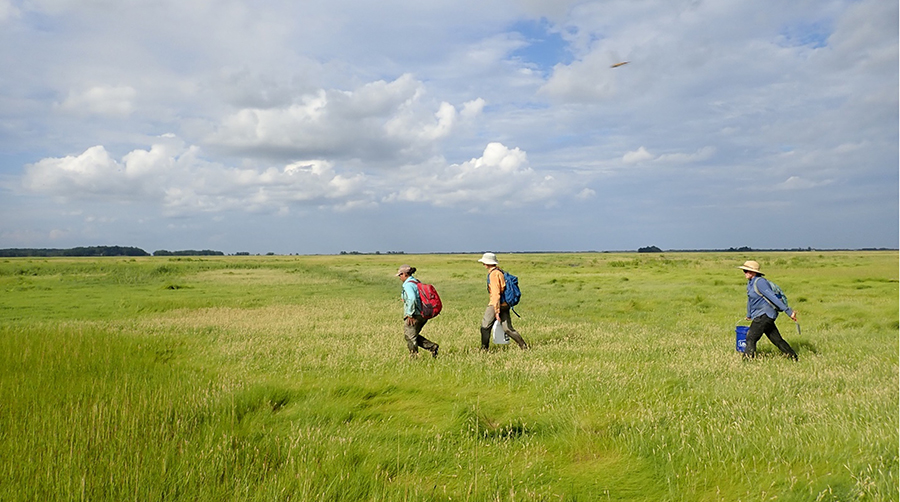Fiddler crabs are moving north as waters warm, and salt marsh grasses are suffering for it
The relationship between fiddler crabs and plants on the U.S. Atlantic coast was thought to be a positive one: fiddler crabs help plants grow. In a new study, published today in Ecology, VIMS researchers Kayla Martínez-Soto and David Johnson found that, thanks to climate change, the relationship between crabs and plants is not always positive.

Martínez-Soto and Johnson looked at impact of the recent range expansion of the mud fiddler crab, Minuca pugnax on salt marshes in its expanded range (northern Massachusetts). Historically, it was found from northern Florida to Cape Cod, Massachusetts. However, due to ocean warming in the Gulf of Maine, it is now found as far as central Maine. Johnson first found fiddler crabs in northeast Massachusetts and New Hampshire after the 2012 marine heatwave.
“Fiddler crabs are the earthworms of the salt marsh,” says Johnson. These thumb-sized crabs burrow into the organic-rich soils of salt marshes. And just as earthworms help grow prize-winning tomatoes by oxygenating the soil and releasing nutrients with their burrows, he said, fiddler crabs can help marsh plants grow. For decades, researchers, including Johnson, have shown that when fiddler crabs are present, there is more grass than when fiddler crabs are absent.
However, in their new study, Martínez-Soto and Johnson found that in their expanded range, north of Cape Cod, the presence of fiddler crabs is associated with a 40% drop in grass biomass.
“We were surprised at such a large, negative effect of crabs on plants. Especially since they have a positive effect on plants in their historical range,” said Johnson. “The paradigm for almost half a century was the fiddler crabs grew grass. But that paradigm has shifted thanks to climate change.”
“Even if historically there is an established relationship between crabs and plants, it doesn’t mean their interaction will be the same everywhere,” said Mart nez-Soto, highlighting how shifting species can change how species interact.
As to why they saw a negative effect of crabs on plants, the authors suggest that when the crabs burrow, they damage the plants’ roots, which are important for water and nutrient foraging. They found that when fiddler crabs were present, the biomass of roots and rhizomes in their expanded range was 30% lower.
Why does the fiddler crab grow grass on the southside of the Cape Cod but reduce it on the northside? Martínez-Soto suggests that there it’s because of the novel interaction of plants with crabs north of Cape Cod. That is, plants on the northside haven’t experienced any burrowing crabs and they aren’t adapted to burrowing animals whereas plants on the southside, which have co-existed with burrowing crabs for millennia, have adapted.
They think the plants will eventually get used to their new neighbors, however, and the negative relationship between plants and crabs may disappear and even become positive. “It’s like when a new neighbor moves in and you don’t get along. But you eventually figure out a way to get along and maybe even become friends,” says Johnson.
In the meantime, fiddler crabs in their new territory may have other impacts on the marsh. Plants are critical to salt marsh maintenance and preservation, said Martínez-Soto. They are responsible for helping salt marshes keeping up with sea-level rise and for storing carbon in their soils. By reducing plant growth and increasing burrows north of Cape Cod, says Martínez-Soto, fiddler crabs could reduce marshes’ ability to store carbon and keep up with rising seas.
“All over the world, plants and animals are migrating into new territories because of climate change,” Johnson said. “For instance, blue crabs, famous in Chesapeake Bay, have moved into Maine. Krill have expanded their range south in the Antarctic.”
“Fiddler crabs have shown us to expect the unexpected because we can’t predict their impacts once they migrate based on what we’ve seen before.”
| Martínez-Soto, K.S. and D. Johnson. 2023. A fiddler crab reduces plant growth in its expanded range. Ecology. https://esajournals.onlinelibrary.wiley.com/doi/10.1002/ecy.4203 |




